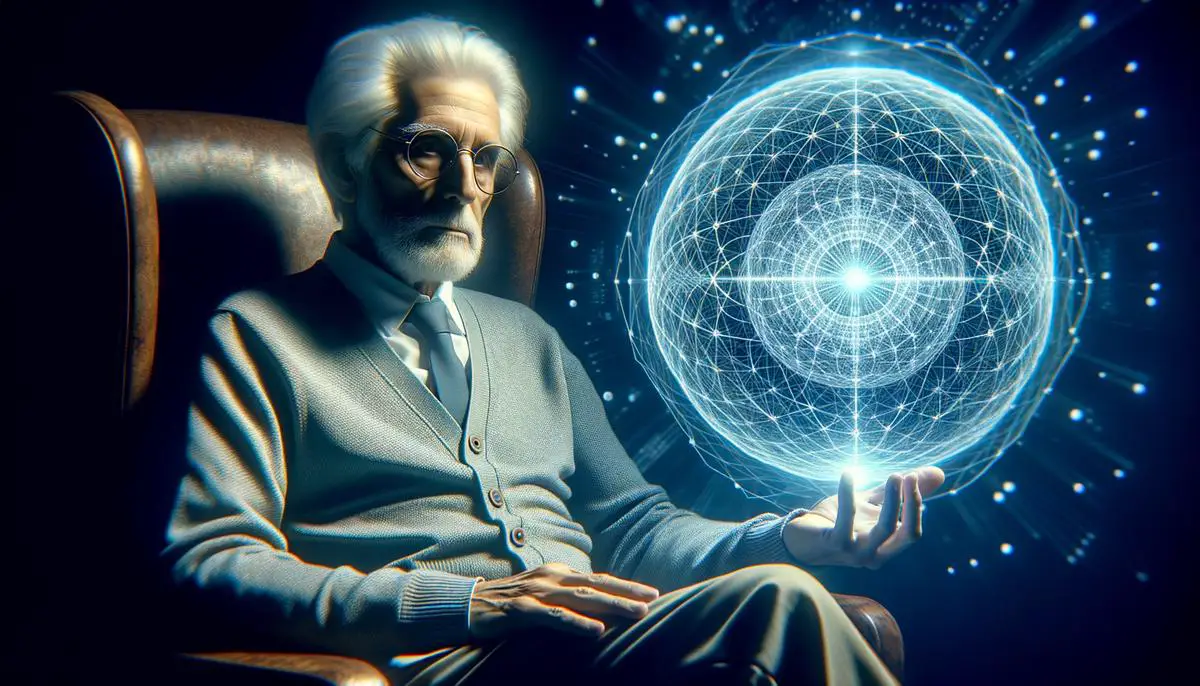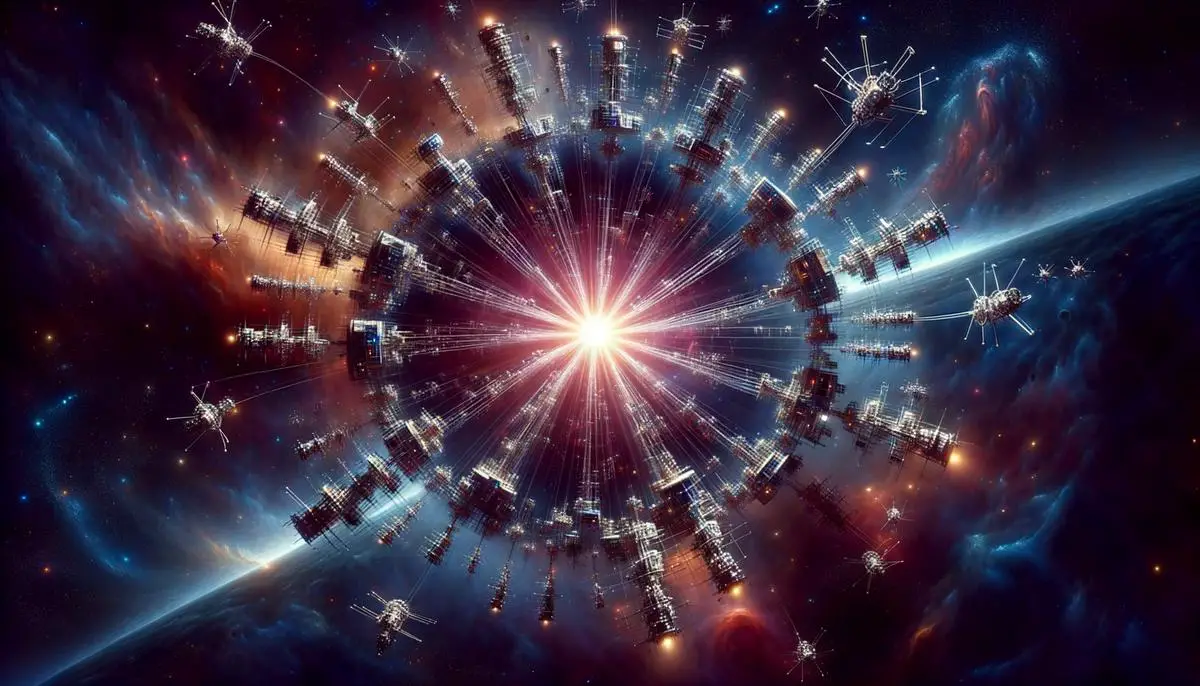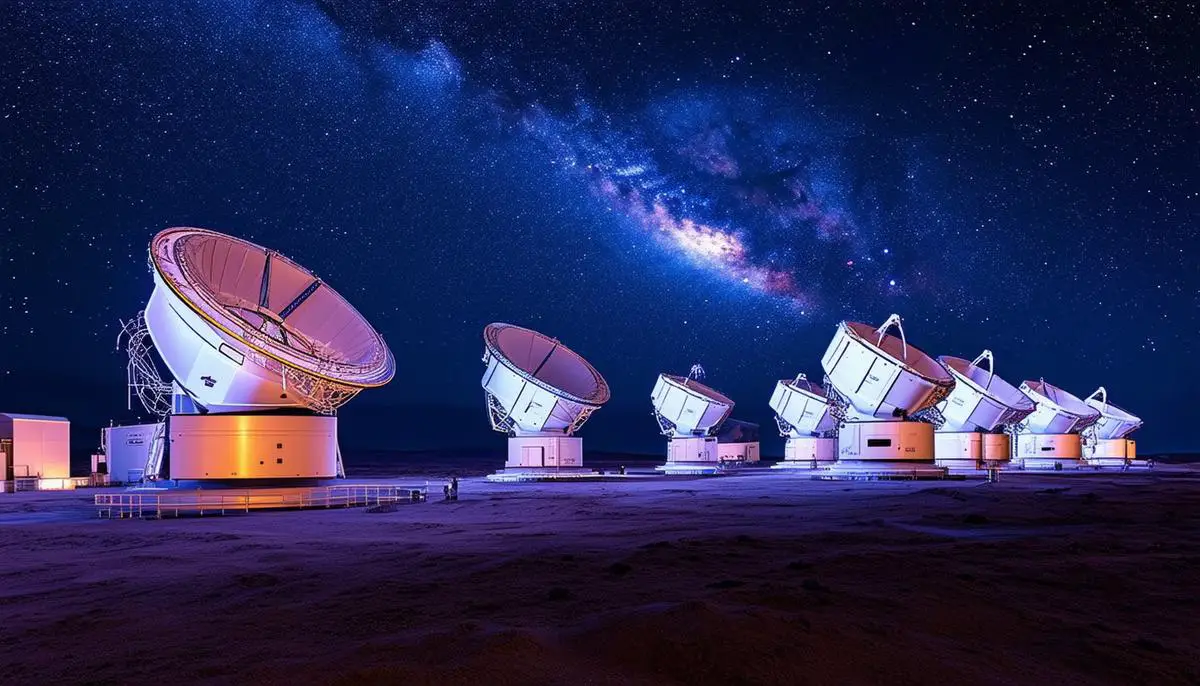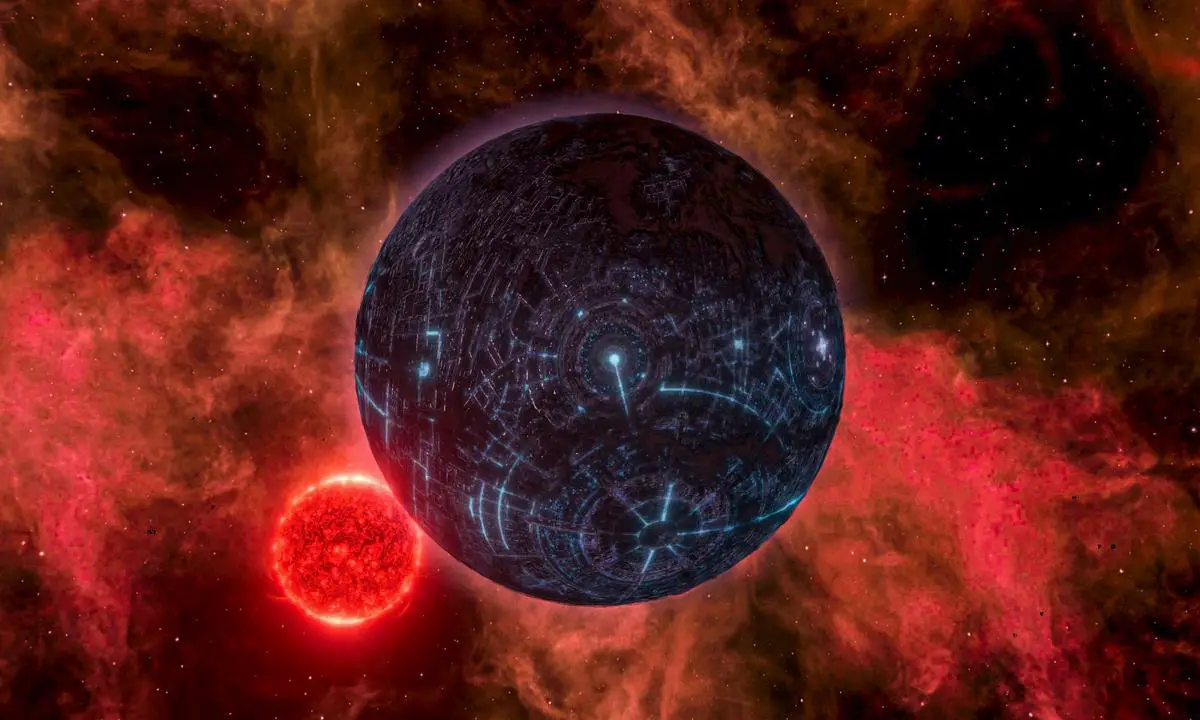Concept and Origin of Dyson Spheres
Dyson spheres, a concept introduced by physicist Freeman Dyson in 1960, propose encapsulating a star to capture its vast energy output. This hypothetical megastructure aligns with a Type II civilization on the Kardashev scale, capable of harnessing all the energy from its parent star.
Dyson envisioned a spherical swarm of solar collectors capturing a star's energy before it escapes into space. This idea has prompted researchers to consider if such structures might be detectable through waste heat emitted in the infrared spectrum.
The concept faces challenges in detection, as identifying a Dyson sphere involves distinguishing it from numerous cosmic candidates and potential interferences. The second law of thermodynamics suggests that excess energy would emerge as waste heat, potentially revealing such a structure.
As our understanding of the universe expands, scientists are redefining search parameters. They're considering whether these megastructures could serve as:
- Computational behemoths
- Star-moving engines like the Shkadov thruster
While a full shell around a star remains impractical due to gravitational instability and structural frailty, the concept of Dyson swarms—a constellation of satellites and collectors—has gained traction as a more feasible alternative.
Critics and physicists acknowledge the immense logistical and material challenges such constructs present. However, the concept continues to inspire both scientific inquiry and imaginative discourse, reflecting our solar aspirations and quest for sustainable power and cosmic understanding.

Engineering Challenges and Feasibility
Creating a Dyson sphere presents nearly insurmountable engineering challenges from our current technological standpoint. The most significant hurdles include:
- Materials science
- Structural stability
- Resource acquisition
Any material used would need extraordinary tensile strength to withstand the immense gravitational forces and extreme thermal conditions surrounding a star. A continuous shell structure quickly reveals deep practical flaws, including dynamic instability and the risk of catastrophic drift.
In light of these challenges, the concept of a Dyson Swarm emerges as a more realistic approach. This design consists of numerous independent structures orbiting the star, offering:
- Flexibility
- Incremental deployment
- Resilience to integrity breaches
However, even a Dyson Swarm presents formidable logistical challenges. The resources required for construction would likely demand the dismantlement of entire planets, raising both ethical and economic concerns.
"My rule is, there is nothing so big nor so crazy that one out of a million technological societies may not feel itself driven to do, provided it is physically possible." – Freeman Dyson
Despite these obstacles, the concept of Dyson structures continues to inspire innovation and push the boundaries of what we consider possible in cosmic engineering. It challenges us to consider novel approaches to meeting our energy needs and expanding our presence in the cosmos.

Detection and Technosignatures
The search for Dyson spheres falls within the realm of technosignatures—indicators of advanced extraterrestrial civilizations. Infrared astronomy plays a crucial role in this quest, focusing on detecting waste heat emissions from these hypothetical megastructures.
All-sky mid-infrared surveys, conducted by missions like IRAS, WISE, and AKARI, have been instrumental in this search. These efforts aim to isolate potential Dyson sphere signatures from the myriad of competing sources in the cosmos.
However, the task is complicated by natural phenomena that produce similar infrared signatures, such as:
- Dust-enveloped red giants
- Star-forming regions
This complexity necessitates the development of sophisticated theoretical models and analysis techniques.
Recent studies suggest expanding the infrared temperature scope for detection, questioning earlier assumptions about Dyson structures' efficiencies. The Project Hephaistos team is conducting a methodical scrutiny of candidate stars, cross-referencing data from multiple surveys to identify plausible technosignatures for follow-up observations.
This ongoing search not only seeks to discover potential alien megastructures but also pushes the boundaries of our understanding of advanced civilizations and the physics of the universe.

Current Research and Discoveries
Project Hephaistos leads current research efforts in the search for Dyson spheres. This international collaboration employs advanced data analytics on vast astronomical surveys, including Gaia, 2MASS, and WISE, to identify potential megastructure candidates.
The project faces significant challenges in distinguishing genuine Dyson spheres from mimicking celestial phenomena. Natural sources such as dust-enshrouded stars and evolving planetary nebulas often produce similar infrared signatures, complicating the detection process.
To address this, astronomers have developed specialized data pipelines that filter through extensive datasets, seeking anomalies that deviate from known natural sources of infrared radiation. This process has narrowed down millions of star systems to a select few candidates worthy of further investigation.
| Survey | Role in Detection |
|---|---|
| Gaia | Precise stellar positions and movements |
| 2MASS | Near-infrared photometry |
| WISE | Mid-infrared emission detection |
Follow-up observations are crucial to validate these candidates and rule out alternative explanations. Researchers remain cautious, aware of the risk of false positives, as demonstrated by past cases like Boyajian's star.
While the search for Dyson spheres has yet to yield definitive results, it continues to drive innovation in astronomical techniques and data analysis. This ongoing pursuit not only seeks evidence of extraterrestrial technology but also contributes to our broader understanding of the cosmos.

Implications for Extraterrestrial Life
The search for Dyson spheres has profound implications for our understanding of extraterrestrial life. These megastructures, if discovered, would indicate the existence of a Type II civilization on the Kardashev scale—one capable of harnessing the entire energy output of its star.
The ability to construct such a megastructure implies a civilization that has overcome immense engineering, social, and ecological challenges. It suggests a society that has achieved long-term stability and cooperation, necessary for undertaking projects of this scale.
The existence of Dyson spheres could hint at technological and philosophical advancements beyond our current comprehension. It raises questions about the motivations and values of such advanced beings:
- Are they creating vast computational networks?
- Manipulating stellar mechanics?
- Pursuing goals entirely unfathomable to us?
As we search for these cosmic beacons, we're not just looking for alien structures; we're engaging in a dialogue about the potential trajectories of intelligent life. This pursuit challenges us to consider our own cosmic aspirations and the steps necessary to achieve them responsibly and sustainably.
The quest for Dyson spheres thus becomes a mirror, reflecting our own potential future and urging us to contemplate our place in the grand cosmic narrative.

As we contemplate the vastness of space and the possibilities it holds, the concept of Dyson spheres stands as a testament to human curiosity and ambition. This cosmic engineering marvel challenges us to think beyond our planetary confines, urging us to consider the potential of harnessing stellar energy on an unprecedented scale. The pursuit of such knowledge reflects our quest for sustainable power and our desire to understand our place in the universe.
- Dyson F. Search for Artificial Stellar Sources of Infrared Radiation. Science. 1960;131(3414):1667-1668.
- Wright JT. Dyson Spheres. Penn State Extraterrestrial Intelligence Center. 2020.
- Carrigan RA. IRAS-Based Whole-Sky Upper Limit on Dyson Spheres. The Astrophysical Journal. 2009;698(2):2075-2086.
- Suazo M, Kempton E, Wright JT, et al. Project Hephaistos – II. Dyson sphere candidates from Gaia DR3, 2MASS, and WISE. Monthly Notices of the Royal Astronomical Society. 2023.
- Blain AW. Hot Dust-Obscured Galaxies and the Search for Dyson Spheres. arXiv preprint arXiv:2308.16512. 2023.
![]()
